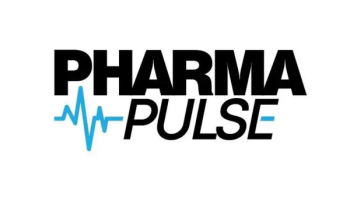
Pharma Supply Chain Faces Risks of Tariffs Driving Excess Inventory
In the fourth part of his Pharma Commerce video interview, Dave Malenfant, a healthcare supply chain expert, cautions that stockpiling to offset tariffs could backfire for pharma companies, leading to expired inventory, higher waste, and costly trade-offs, unless renegotiation strategies are pursued.
In a video interview with Pharma Commerce, Dave Malenfant, a healthcare supply chain expert, discusses the potential impact of a proposed 250% tariff on pharmaceutical imports, emphasizing that the effect depends heavily on where in the supply chain the tariff is applied. If imposed on active pharmaceutical ingredients (APIs), the impact would be minimal, as APIs contribute relatively little to the total cost of a finished drug and adjustments could be made through negotiation. However, if applied to finished pharmaceuticals or key components—such as bottle plugs, closures, molded parts, and glass—the cost implications could be significant, since these materials represent a substantial portion of overall manufacturing costs.
Malenfant notes that the US conducts much of its pharmaceutical research and development domestically but often outsources manufacturing to lower-cost countries, only to re-import the products for sale. He questions this practice, arguing that products sold in the US should be manufactured domestically to strengthen the supply chain and reduce dependency on foreign production. He cites examples of non-US companies, such as the world’s largest generic drugmaker, establishing manufacturing facilities in the United States as a step in the right direction.
The interview also addresses duty drawback. a current process allowing companies to recover duties paid on imported pharmaceuticals, which the proposed tariff regulation would reportedly eliminate. Without duty drawback, the financial burden on manufacturers and distributors would increase.
While higher component costs could drive up product expenses, Malenfant believes that companies are unlikely to pass these increases directly to patients. Instead, they may absorb the costs by reducing margins, particularly since US pharma companies already operate with some of the highest profit margins globally. However, the ripple effect would reach insurance companies, prompting complex negotiations between insurers, distributors, and manufacturers to prevent direct cost increases to patients and maintain access to medications.
He also comments on how the tariff could cascade through the pharma supply chain; the downstream operational challenges that might arise for pharma companies;mitigation strategies industry leaders should already be exploring; and much more.
A transcript of his conversation with PC can be found below.
PC: What downstream operational challenges might arise for pharma companies?
Malenfant: What we have to be careful about is that there's dating on all pharmaceutical products, and you've got to be careful if you carry too much inventory. There’s a lot of pressure on the pharmaceutical companies to reduce the amount of inventory—or they push the inventory out to the distributors—and so I don't think it's going to have as much of an impact on inventory management as people think it's going to have. In fact, because the whole industry for the last few years after post-COVID—has been about, how do we now accelerate the supply chain? How do we make it more efficient so that we move products through the supply chain and we don't let it sit there?
I do not support adjusting inventories to accommodate these tariffs, because what you're going to do, and I've seen this happen with companies, who say, well, in order to avoid or in order for us to accommodate these heavy tariffs, we're going to carry four-months inventory. Well, four- months inventory means you're five-and-a half months to get it to the customer. What happens Nico, if you’ve only got 24 months dating on a product. By the time that the patient gets it or by the time drugstore gets it, you’re only going to have maybe 13, 14 months dating on it.
The rule of thumb is that most pharmacies will not take anything with 12 months or less dating. You’re carrying more inventory, but now your destruction goes up. Your bad inventory goes up. Is it worth it? You’ve got to do the cost analysis. If I pay this royalty or this tariff—which to me, is similar to a royalty—on increasing inventory, what's the trade off, and what's the cost to me from a system?
Now renegotiating, I say, go for it. We renegotiate agreements where we can get lower costs coming from where we're exporting it, and renegotiate some contracts. If it's an API, we renegotiate the pricing to take the royalty out of the cost of the product, so therefore, it reduces the amount of tariffs that we have to pay. If it's components, we renegotiate moving it and having a plan to move it.
Newsletter
Stay ahead in the life sciences industry with Pharmaceutical Commerce, the latest news, trends, and strategies in drug distribution, commercialization, and market access.





